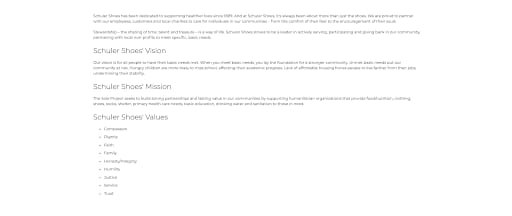
How do you truly know who and what your brand is without a brand guideline? A brand guideline explains the importance of your brand, who you are and the design and copy elements – and importantly – the standards of your brand. You will want to have a physical guide on-hand so your and existing and future employees can keep your brand consistent and cohesive. Surprisingly, many companies of all sizes do not have a brand guideline to reference. How are your employees supposed to know who your company is all about if they don’t know for themselves? In this article, we’ll break down the must-haves for any brand guide and how to establish them.
Brand Story
Where do you start a brand guide? The best way to start your guide is with your brand’s story. While crafting your company’s story, you should concentrate on answering the following questions:
How did you start?
Why did you start?
What was the progression of the business?
Explaining the story behind your webstore will help give your company, future employees and customers a taste of who you are and why you are here. Your brand’s story needs to be informative but also in your company’s voice. This section is the first step in showing off your business’ personality.
Nutraceutical has a thorough yet simple way of explaining their brand’s story:

Brand Values
Your brand values are where you explain what your company stands for and why you do what you do. This section is a great place to make a list of what you and your brand value. Making a list will help you and your employees visually see what needs to get done and how those activities align with your values. While figuring out your brand’s values, many companies choose a specific social cause to support. A social cause can coincide with your brand story and mission statement. In today’s marketing climate, many social issues that companies follow are sustainability, inclusivity, freedom and safety. Surveys show that 76% of respondents would or have purchased from a company that supports organizations or causes they approve. While 67% of respondents have stopped or will not shop from companies that do not have aligned views on social issues. Therefore, while setting up your brand’s values, try to stay as clear as possible and implement it in the right way like on your about us page or a social media bio or about us section.
Mission Statement
Every brand needs a mission statement. A mission statement explains what the business or organization is, why it exists and the reason for its being. Keep your mission statement between one to four sentences long. You want to keep it simple yet concise. It helps your company refocus attention on accomplishing future goals, let’s customers know the company’s purpose and serves as a guide for decision making. Your mission statement may also go on your about us page on your website with your values and brand story, so customers can understand who and what you are a little more.
Schuler Shoes effectively expresses its values and mission statement on one page:


Audience and Competitors
While creating your guide, you will want to describe your target audience. Explain your targeted customers’ location, age, gender, interests and other relevant information. The more information you have about your audience, the easier it will be for you and your team to connect with them, either in-person or via marketing campaigns. Also, include a list of your top competitors and why they are your competition. Identifying your competitors will help you and your employees see what the other brands are doing throughout the year and how to have the same or better standards and marketing efforts.
Design Elements
The design of your brand is important when implementing any marketing strategy. This is where your customers visually understand who you are. You will want to explain all your design elements within your brand guideline document, so your brand looks cohesive on every marketing strategy that you implement. Essentially, your brand guidelines will have a style guideline within it. A style guide is a set of standards that defines your company’s branding. Design elements to include in your style guidelines are the font, font size, typography, brand colors, image/video sizes, layouts, logos and any other information about designing. It is best to include examples of incorrect and correct uses of the design. Make sure every graphic designer and copywriter has a copy on-hand of your style guide because it will be vital to their success and the success of your advertising efforts.
Tone of Voice
Just like with your visual design elements, your tone of voice or copy standards must be clearly defined. Defining your tone will have an impact on all the written copy you use in everything you implement for your business like your website, social media, text messages, advertisements, customer service, emails and any other marketing effort. You will want to explain the type of voice your company portrays based on your target audience. Explain if your customers are more conservative, youthful, energetic, open-minded, etc. It is also good to include examples of instead of this, we say this and past work. You can also put copy information under your style guidelines.
These are the basic tips to get your brand guidelines started. You can add more information like your brand identity, questions and answers and any other relevant information. Also, remember to update the guide every time you change or add anything to your brand and style guide. Creating an effective brand guide requires a team of experienced marketing and design professionals. Our team at Interactone has many years of experience creating compelling branding design material for high profile clients. For more information and help with your brand guidelines or any other marketing efforts, contact us today.

